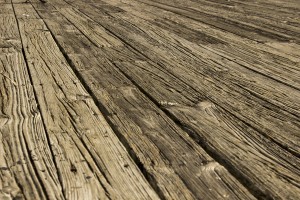In this case out of Adams County the Supreme Court of Pennsylvania reversed the Superior Court’s determination that upon the sale of a single lot in a subdivision development a developer’s interest in the platted roads depicted on the subdivision plan transforms from a fee interest into an easement interest. Such a determination, the Court found, would absurdly result in an easement without a servient estate, which is not possible.
 The Lake Meade Subdivision (the “Subdivision”), developed by Lake Meade Incorporated (“LMI”), was a residential development surrounding Lake Meade. The Lake Meade Property Association (the “Association”) was incorporated by LMI in June 1966. LMI’s subdivision plan (the “Plan”) was recorded in January 1967. LMI transferred title to the property currently owned by the Starlings (the “Starling Tract”) to their predecessors in title in May 1967. The Starling Tract was located at the end of a peninsula jutting into the lake and was accessed by Custer Drive (the “Road”), a dead-end road terminating in a cul-de-sac at the northern end of the peninsula. The Road was bordered to the east by the Starling Tract, and to the north and west by narrow strips of land (the “Disputed Property”). The Disputed Property was unaccounted for on the Plan; however, the Association maintained a community bulletin board and garbage cans on it, encouraging the impression it was intended for communal use. In September 1968, after selling most of the lots, LMI deeded all roads on the Plan to the Association, but made no reference to the Disputed Property. A dispute arose between the Starlings and the Association as to the ownership of the Disputed Property, leading the Starlings to file suit against the Association raising claims for trespass, ejectment, nuisance, declaratory judgment, and declaratory and injunctive relief. The Court of Common Pleas of Adams County granted the Association’s motion for partial summary judgment as to the claims for trespass, ejectment, and declaratory judgment, concluding the Association retained a fee to Custer Drive and that the Starlings had no ownership or possessory interest in the Disputed Property outside the point of tangency of the water-line and the northern edge of the cul-de-sac, as depicted on the Plan because no written description of the metes and bounds existed. The Court then dismissed the remaining nuisance claim. The Starlings appealed.
The Lake Meade Subdivision (the “Subdivision”), developed by Lake Meade Incorporated (“LMI”), was a residential development surrounding Lake Meade. The Lake Meade Property Association (the “Association”) was incorporated by LMI in June 1966. LMI’s subdivision plan (the “Plan”) was recorded in January 1967. LMI transferred title to the property currently owned by the Starlings (the “Starling Tract”) to their predecessors in title in May 1967. The Starling Tract was located at the end of a peninsula jutting into the lake and was accessed by Custer Drive (the “Road”), a dead-end road terminating in a cul-de-sac at the northern end of the peninsula. The Road was bordered to the east by the Starling Tract, and to the north and west by narrow strips of land (the “Disputed Property”). The Disputed Property was unaccounted for on the Plan; however, the Association maintained a community bulletin board and garbage cans on it, encouraging the impression it was intended for communal use. In September 1968, after selling most of the lots, LMI deeded all roads on the Plan to the Association, but made no reference to the Disputed Property. A dispute arose between the Starlings and the Association as to the ownership of the Disputed Property, leading the Starlings to file suit against the Association raising claims for trespass, ejectment, nuisance, declaratory judgment, and declaratory and injunctive relief. The Court of Common Pleas of Adams County granted the Association’s motion for partial summary judgment as to the claims for trespass, ejectment, and declaratory judgment, concluding the Association retained a fee to Custer Drive and that the Starlings had no ownership or possessory interest in the Disputed Property outside the point of tangency of the water-line and the northern edge of the cul-de-sac, as depicted on the Plan because no written description of the metes and bounds existed. The Court then dismissed the remaining nuisance claim. The Starlings appealed.
On appeal, the Superior Court reversed. It found that when LMI sold the first lot in the development, it lost its fee interest in the platted roads shown on the Plan, and only owned an easement in the Road when it deeded its interest to the Association. Therefore, the court concluded, it was error for the trial court to rule that the Association had a fee simple absolute interest in the Road. The Association appealed.
On further appeal, the Supreme Court of Pennsylvania reversed the Superior Court’s determination. It found it absurd to think that upon the sale of the first lot LMI’s fee interest in the Road had been transformed into an easement. Specifically, the Court reasoned that an easement requires both a servient and dominant estate. If LMI held only an easement interest in the platted roads, there would be no servient estate. Therefore, the Association held a fee interest in the Road. As for the Disputed Property, the Court held that the Starling Tract ended at the point of tangency of the water-line and the northern edge of the cul-de-sac as depicted on the Plan. Therefore, the Court reinstated the trial court’s grant of partial summary judgment and remanded the matter of the Association’s use of the Disputed Property to the Superior Court.
Click here to read: Starling v. Lake Meade Prop. Owners Assn., 30 MAP 2016 (Pa. May 25, 2017).
Edited by:


Leave a Reply